The view of Canberra, Australian Capital Territory from the Telstra Tower on Black Mountain.
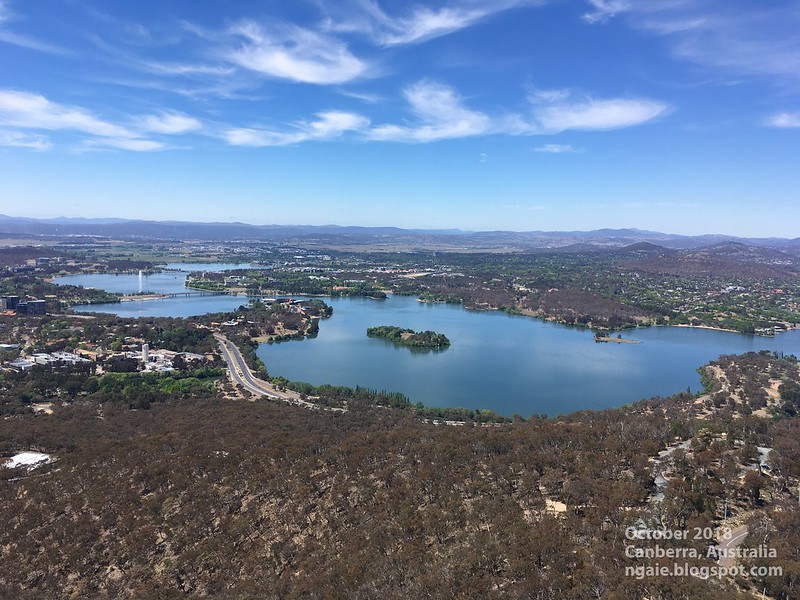
Canberra is quite an unusual city it that it is completely master planned as a capital city of the 20th century like Brasilia, Brazil and Islamabad, Pakistan following "garden city" town planning principles. What this means in reality is that the entire city looks very beautiful when driving through in a private vehicle. The city is like one giant country park and instead of "walking through the park", you are expected to admire the city and its monumental buildings by "driving through it". As a result, the city is characterized by endless suburbia with all shops and commercial facilities located at "designated centres" and is not very walkable but very green.
One of my stops was the Telstra Tower, a communications tower built in the 1980s on top of Black Mountain. From here I got a spectacular 360 degree view of the city.
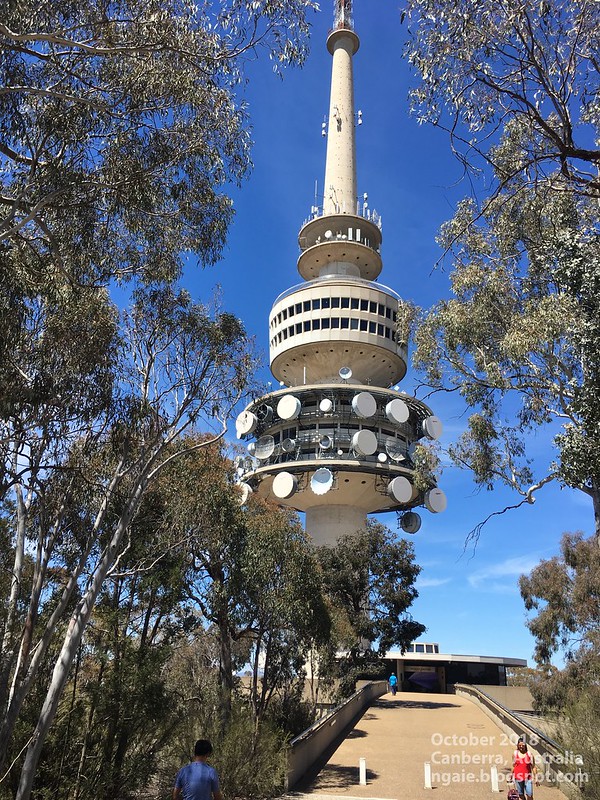
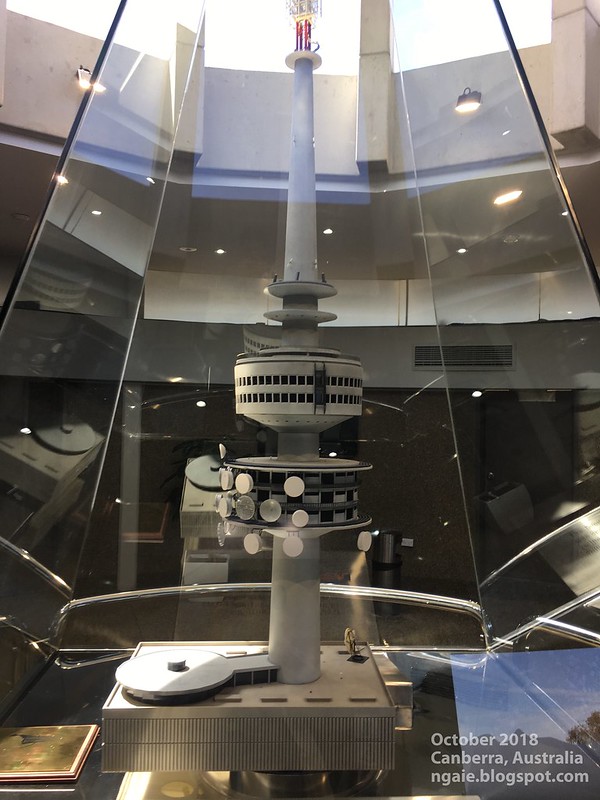
The lake (Lake Burley Griffin) which is named after the American town planner responsible for the design of Canberra is actually a man-made lake which was only completed in the 1960s.
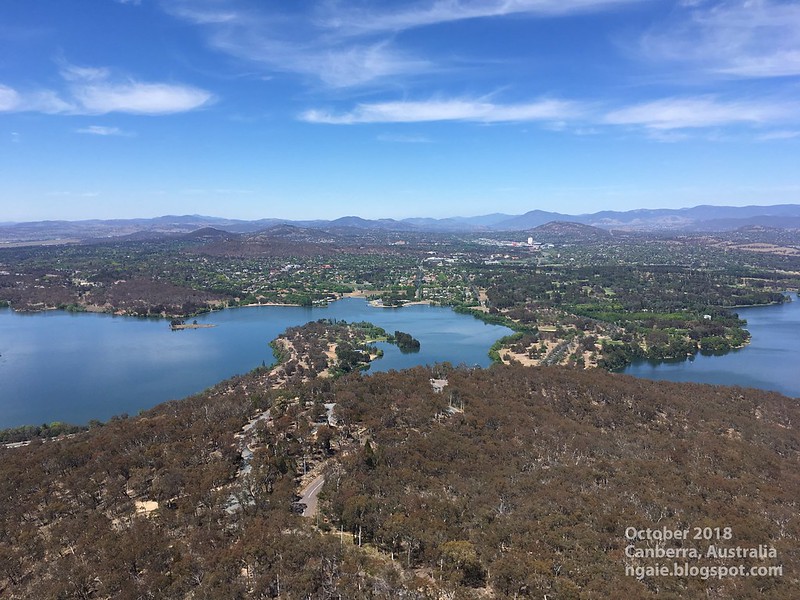
Here, you can see what a "garden city" looks like. Low density suburbia separated by vast areas of natural vegetation from which parkways run through to connect all the suburbs.
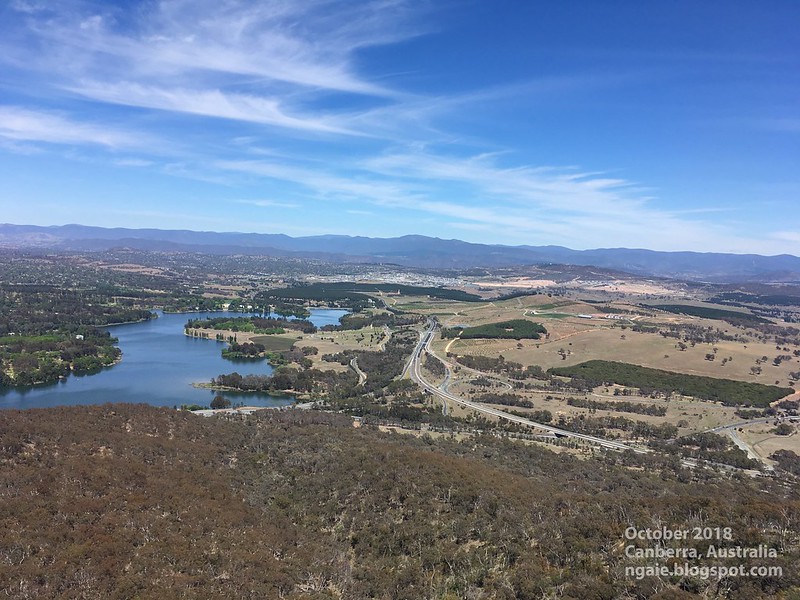
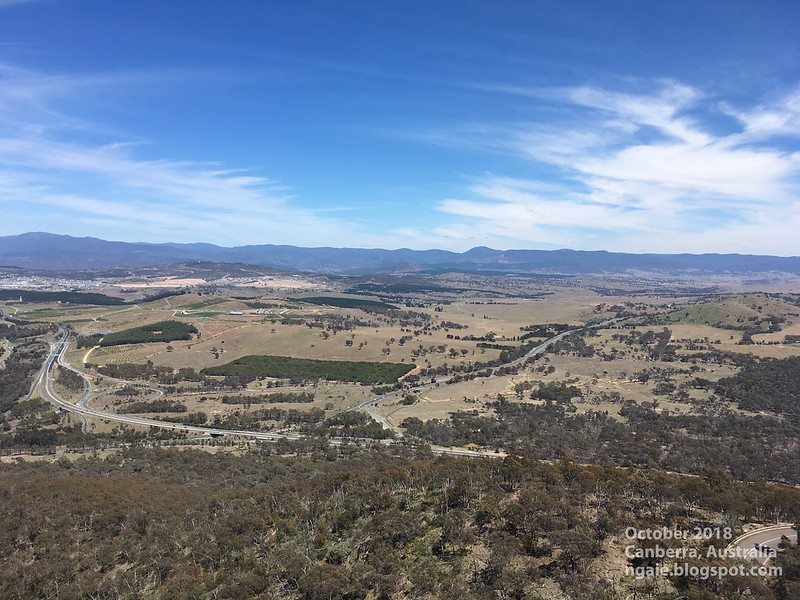
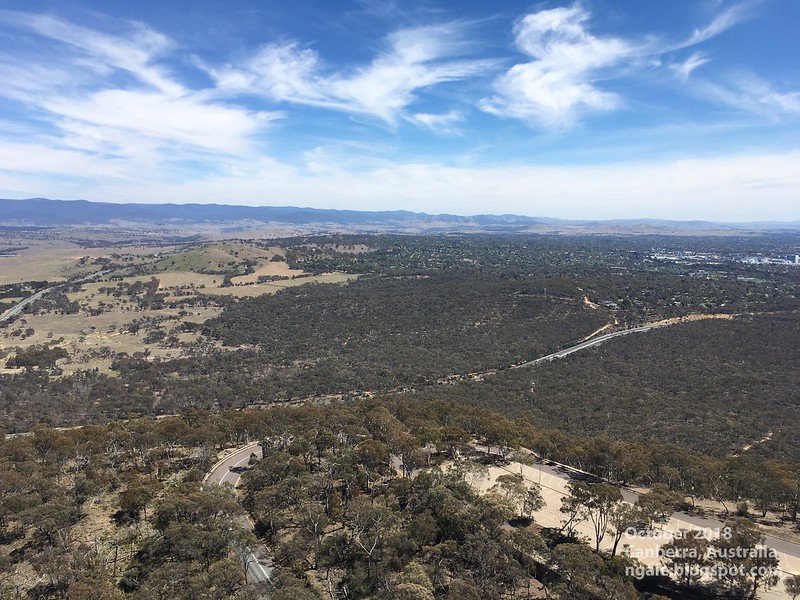
Here you can see the town centre of Belconnen in the far distance.
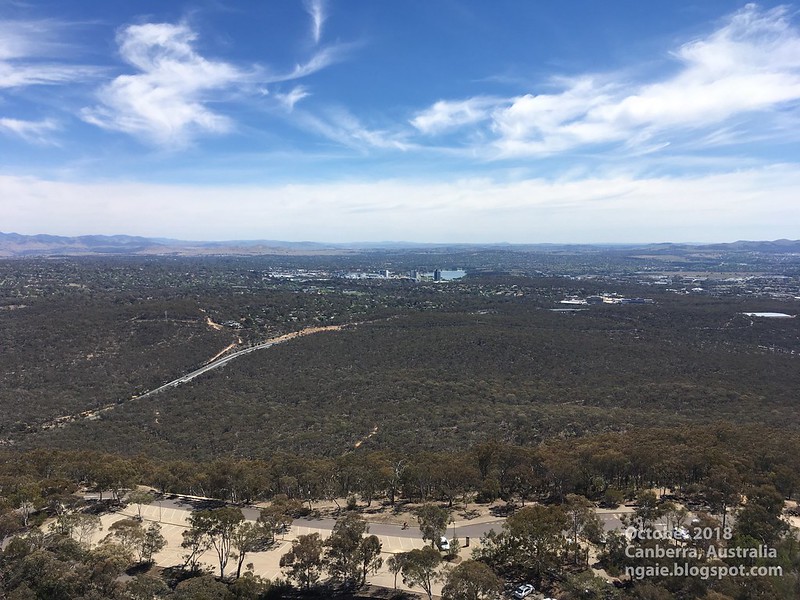
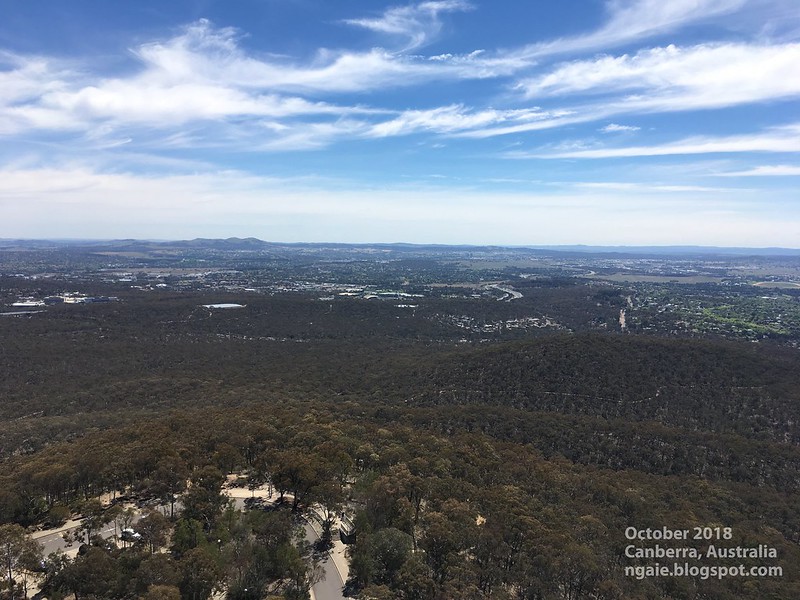
The main city. You can clearly see the main axis of the city in straight diagonal lines.
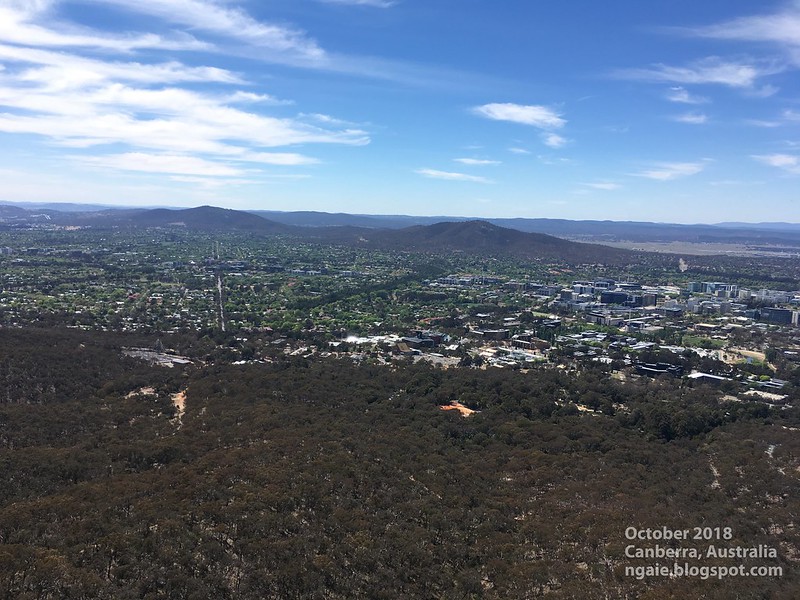
The central business district west of the lake with the giant fountain and the government zone east of the lake.
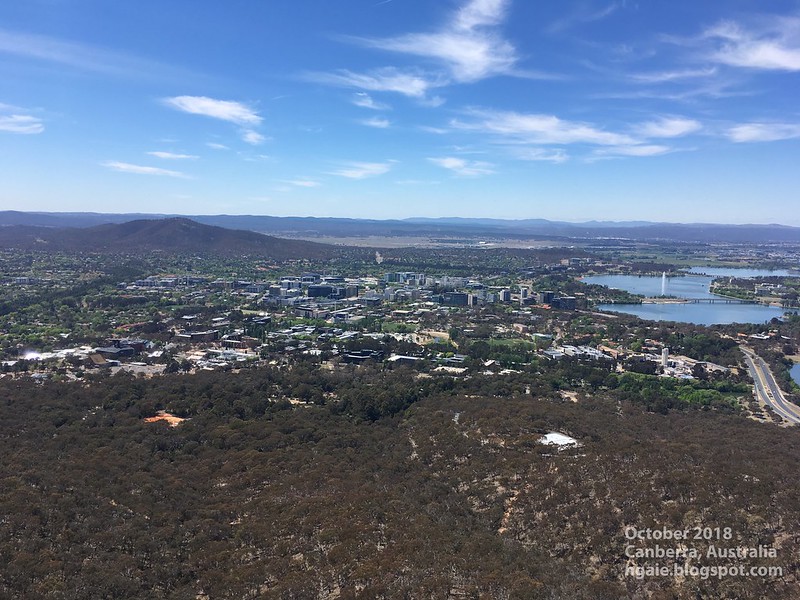
Back on ground level, I visited the Parliamentary Zone where all the government buildings and ministries were located. The area is shaped like a triangle with Parliament House located on a hill at the top of the triangle.
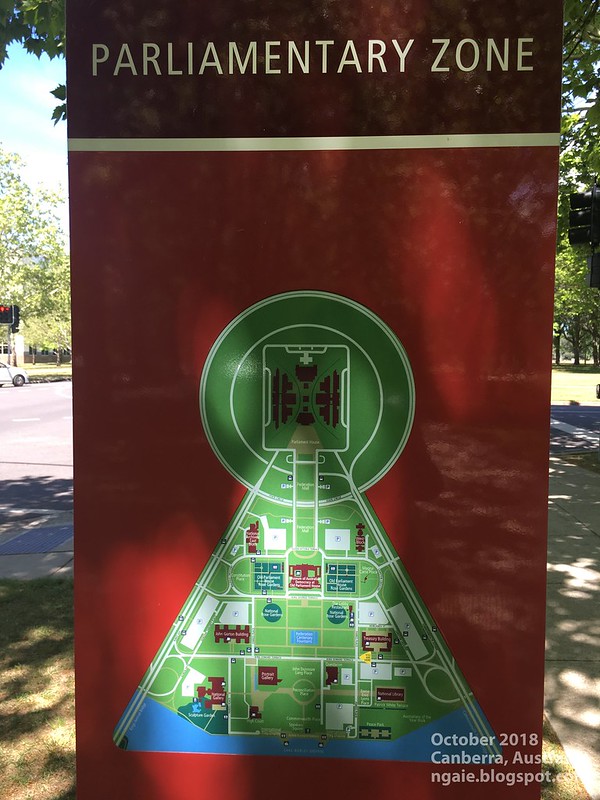
The Australian national parliament building where you can see the giant flag from far away. It was only completed in 1988! Despite visiting on the weekend, it was almost deserted because there is simply no way to walk to the building from the Parliamentary Zone (the distance is too far). The only way to get there was to drive there.
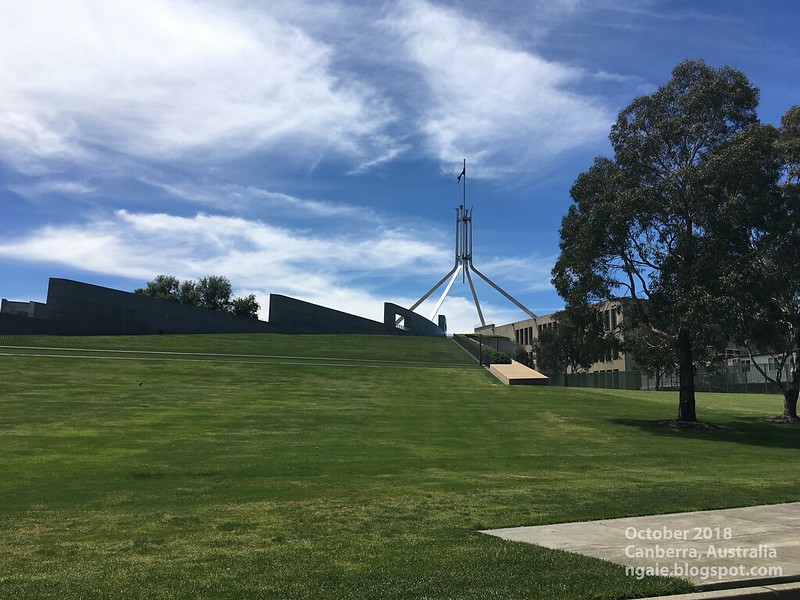
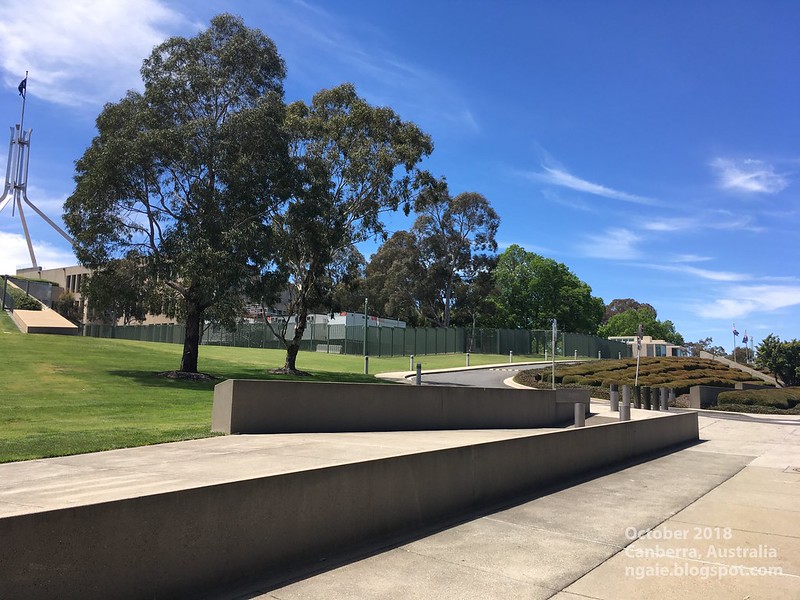
Back to the central area of the Parliamentary Zone.
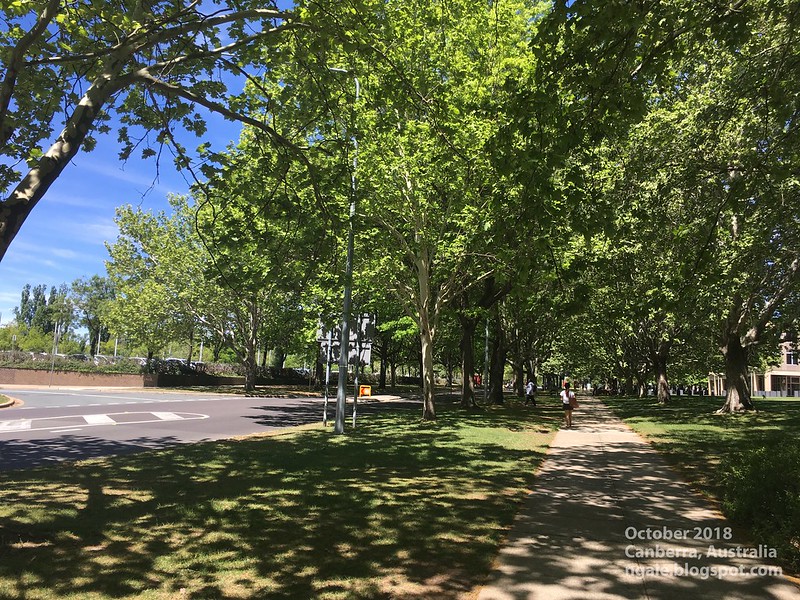

Since Canberra was not really developed until after the post World War II period (due to a lack of funds), there aren't many grand historic buildings. Even the Treasury (Finance Ministry) Building shown here is very simple.
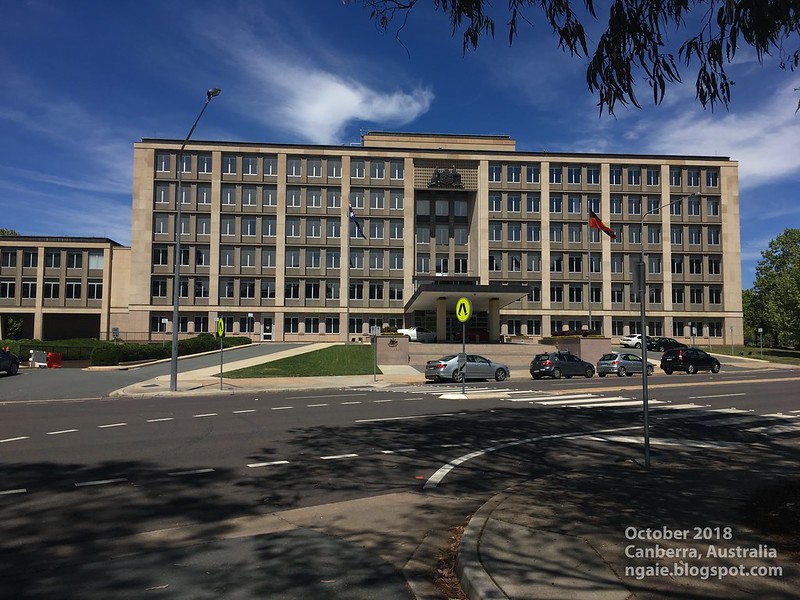
The vast empty lawn in front of the Old Parliament House.
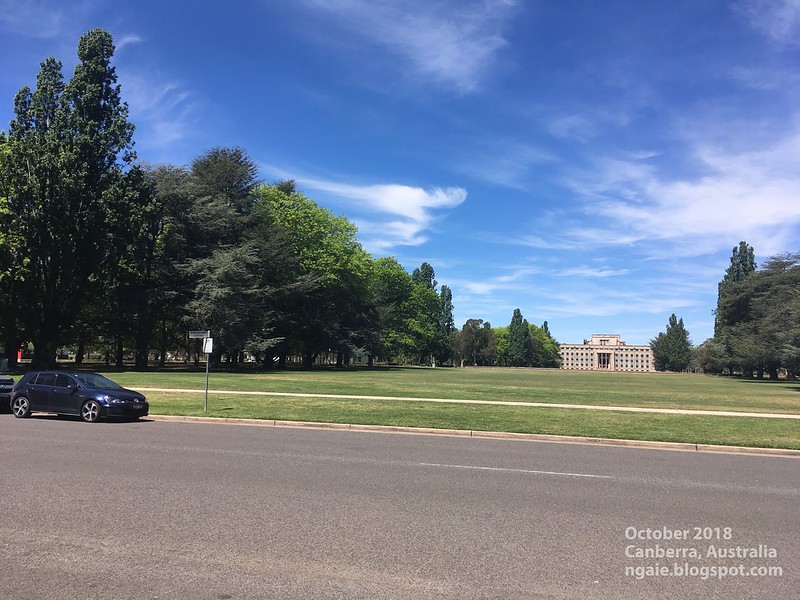
The Australian War Memorial in the distance as viewed from Old Parliament House.
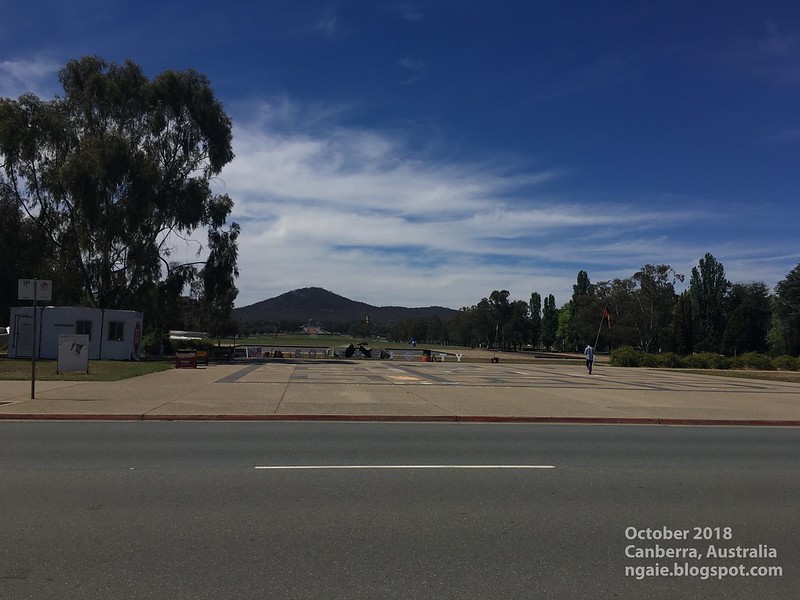
Before the current Parliament House opened in 1988, the national parliament used to meet in this tiny temporary building!
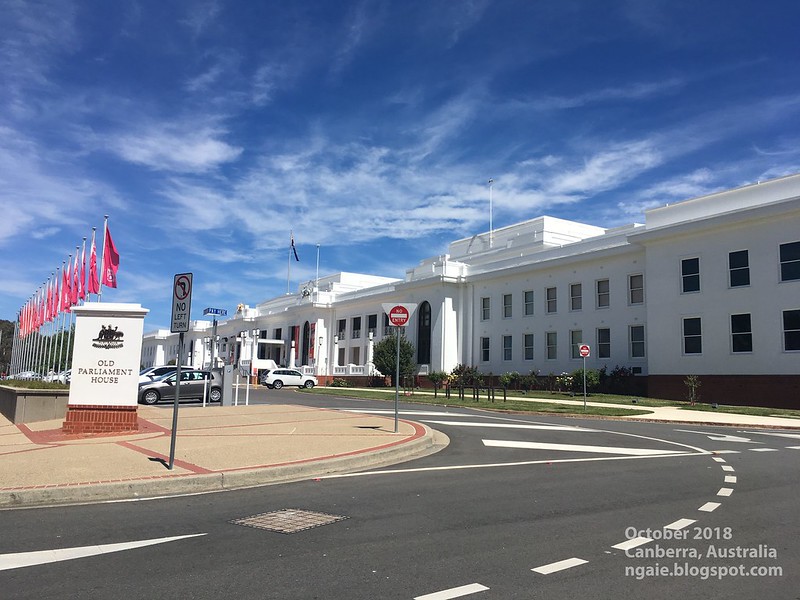
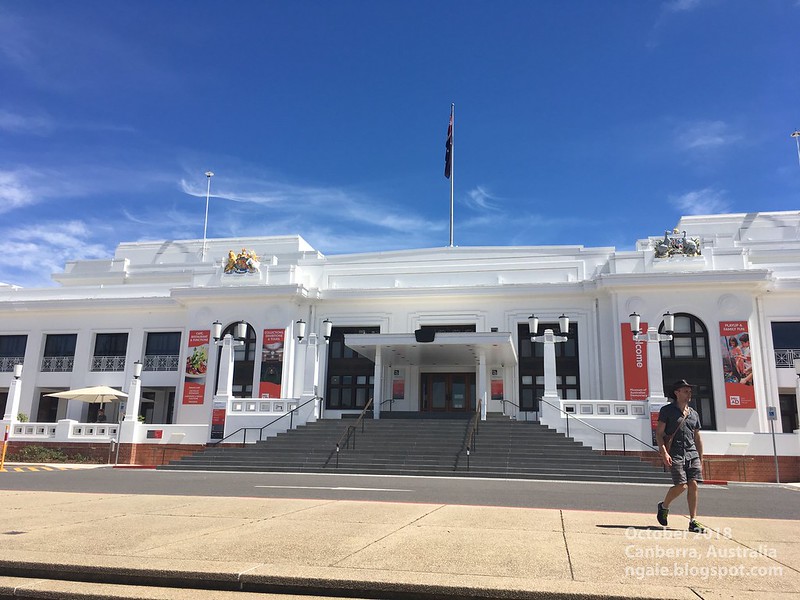
It only cost AUD $2.00 to visit the building which is now a museum. I think this must be one of the lowest admission costs for a museum in Australia (considering how expensive things are here).
The main hall inside.
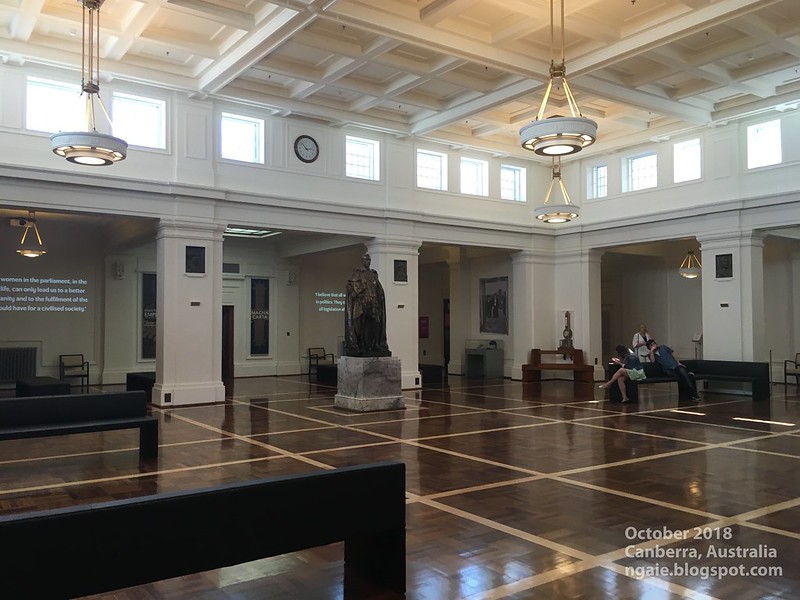
The former House of Representatives chamber (House of Commons in other Commonwealth countries).
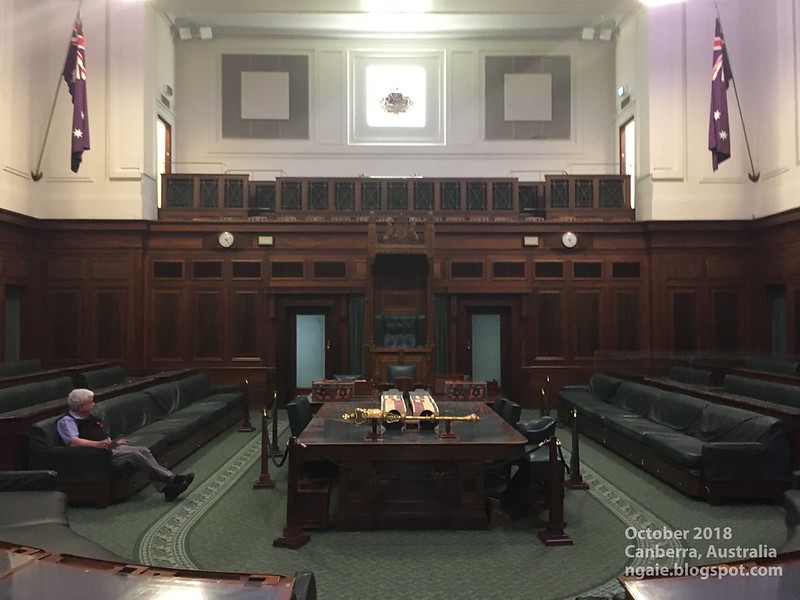
It was interesting how they preserved the offices just like how they were in the late 80s. This is the speaker's office which seems to date from the 1930s?

Secretary desks for the speaker which looks like the 1960s.
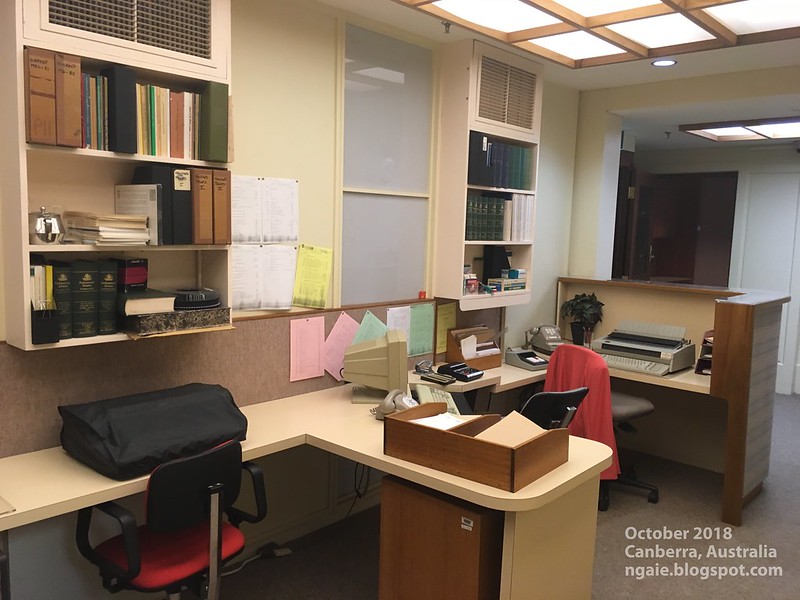
The Prime Minister's offfice. This has a 1970s vibe.
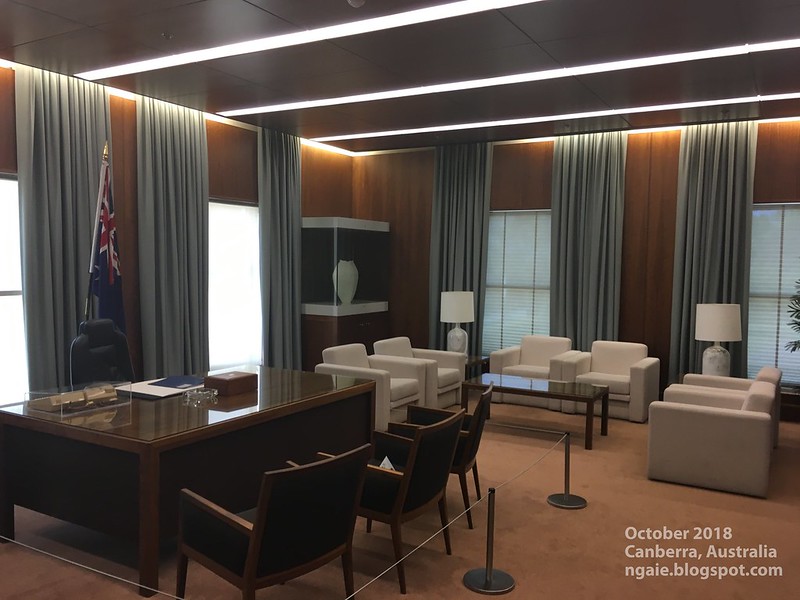
The Cabinet Room.
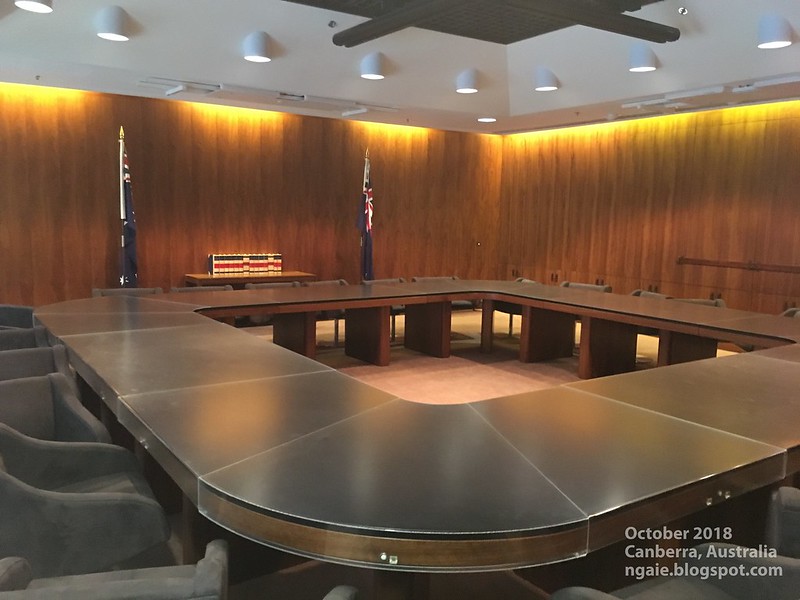
Back outside, the rows of flags on the lakefront.
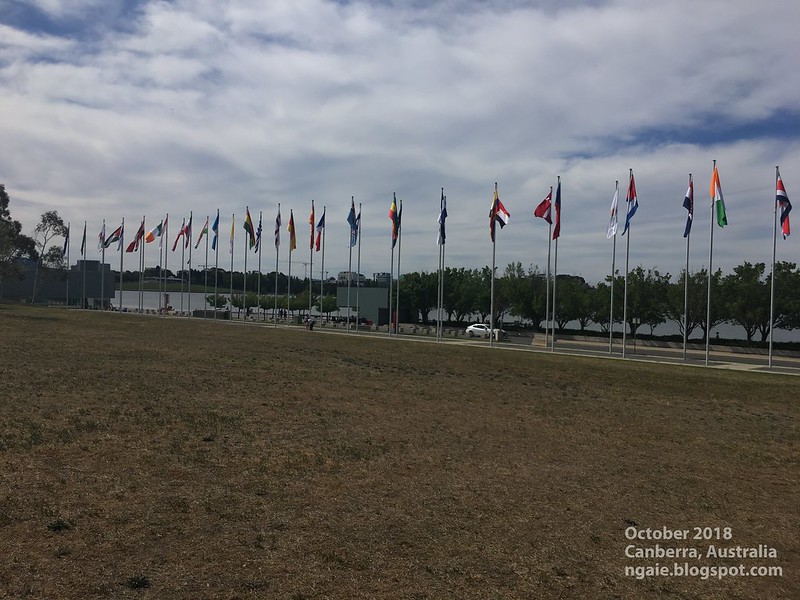
Telstra Tower on Black Mountain in the background.
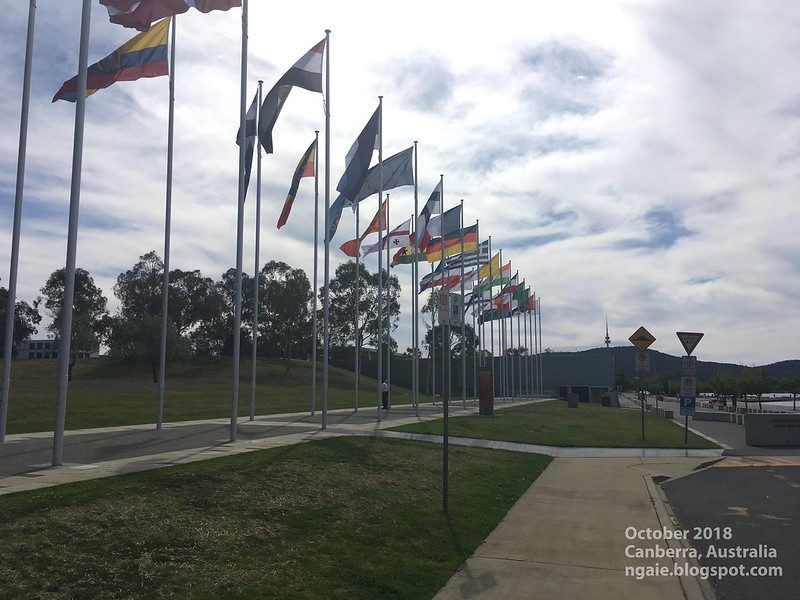
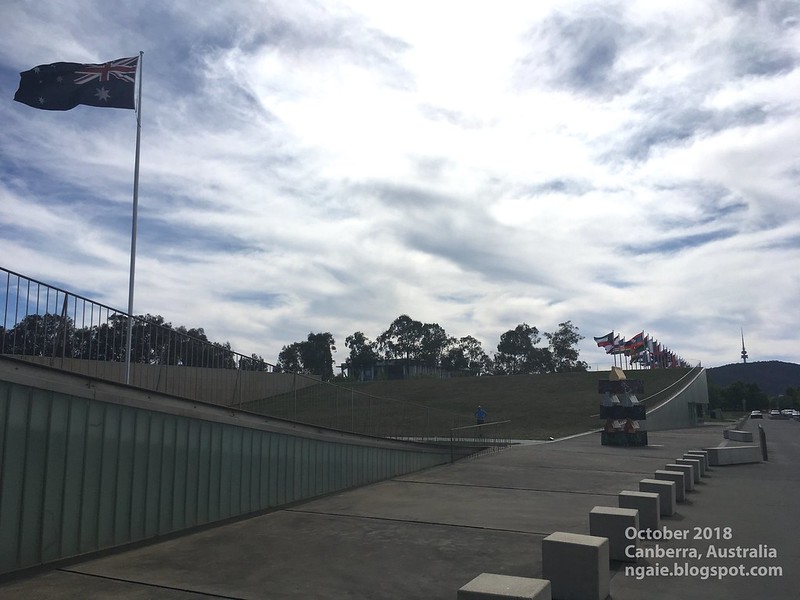
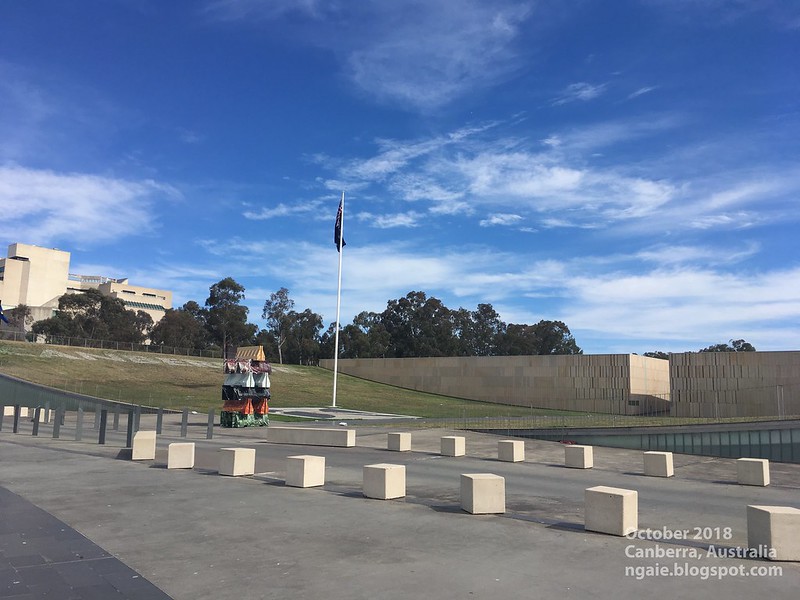

The Australian War Memorial at the foot of Mount Ainslie across from the lake.

The grand boulevard leading to the Australian War Memorial.
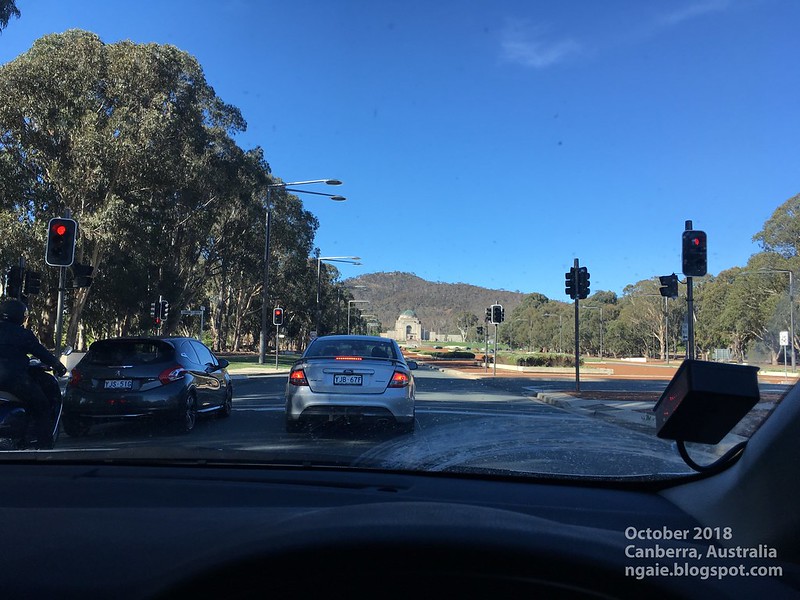
The Australian-American Memorial "The Eagle" near the Defence Precinct.
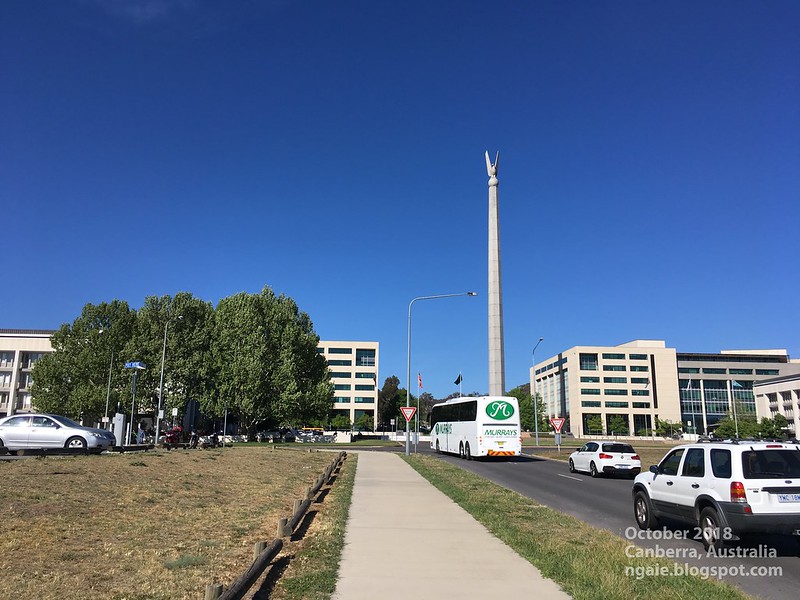
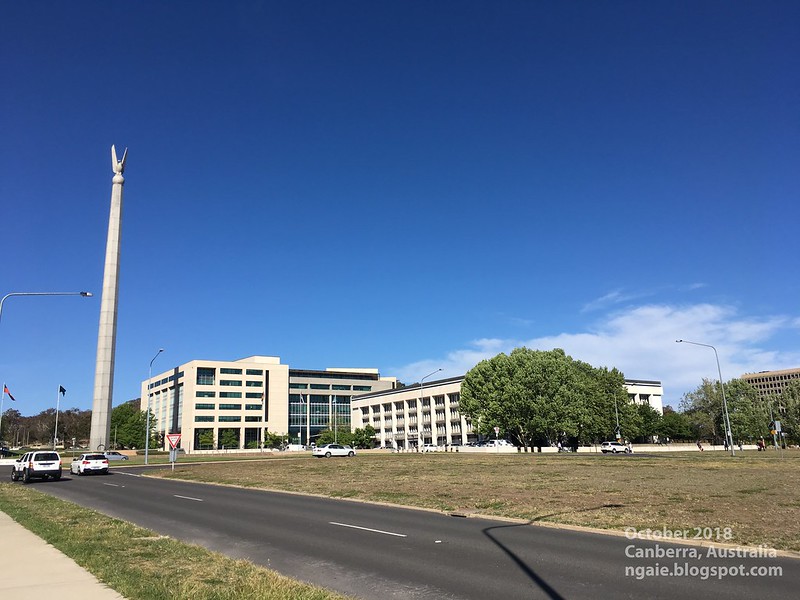
On my way to the National Capital Exhibition museum near the lake on the opposite side of the Parliamentary Zone.
The National Library and Parliament House in the distance.
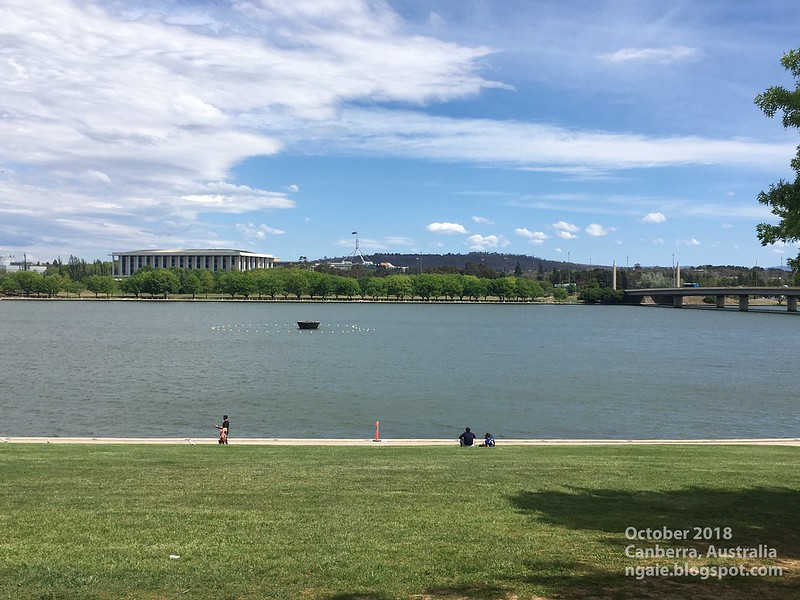
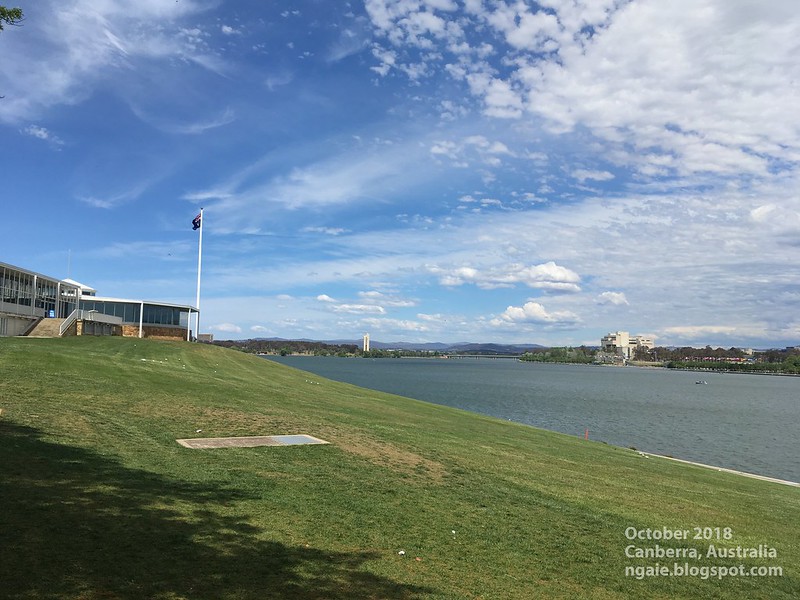
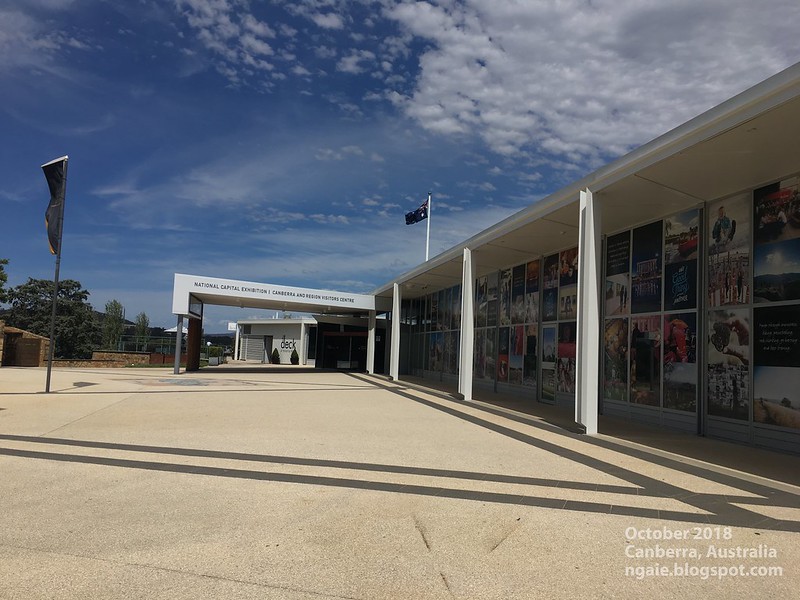
Mosaic of the original plan for Canberra by the American planner, Walter Burley Griffin.
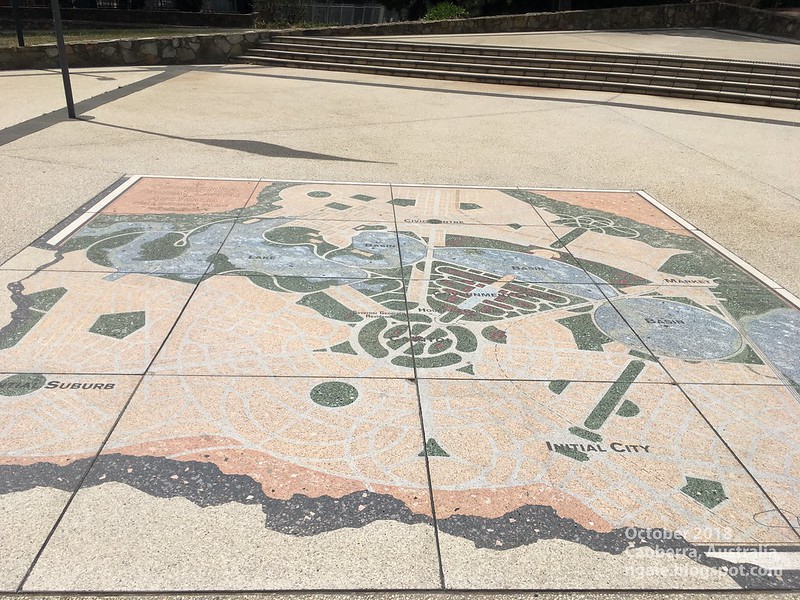
The original site of Canberra before the city was built.
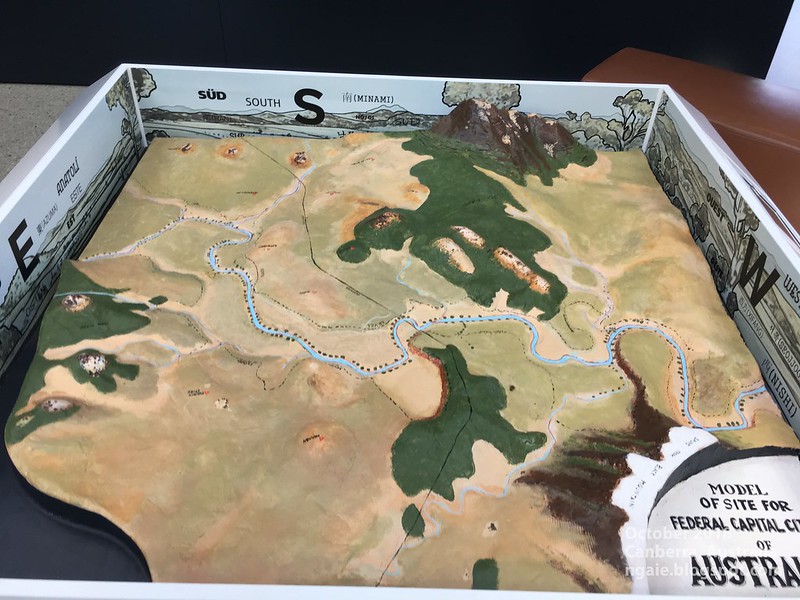
Scale model of Canberra.
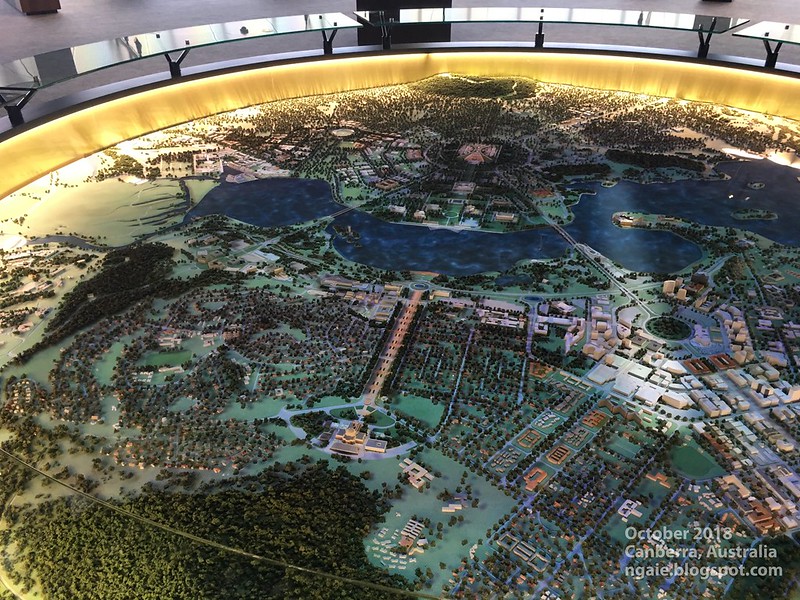
The central business district of Canberra (Civic). Almost completely empty on the weekend.
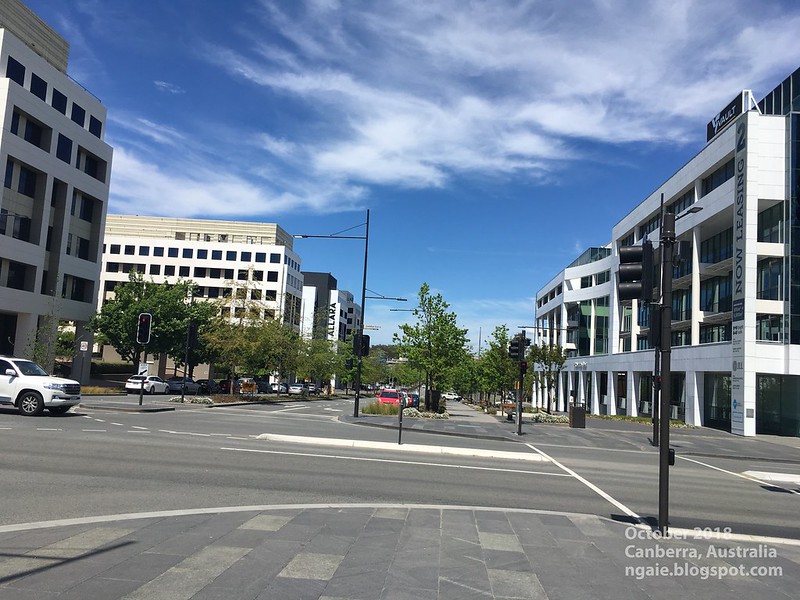
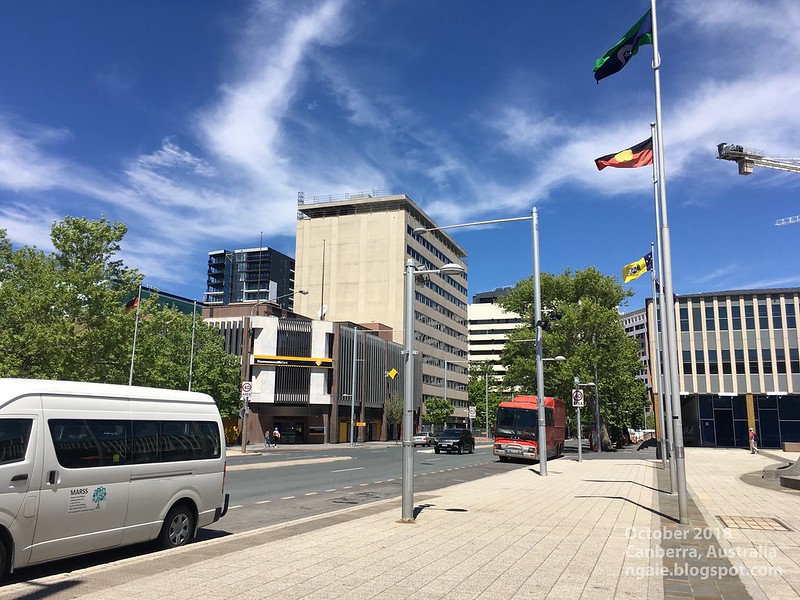
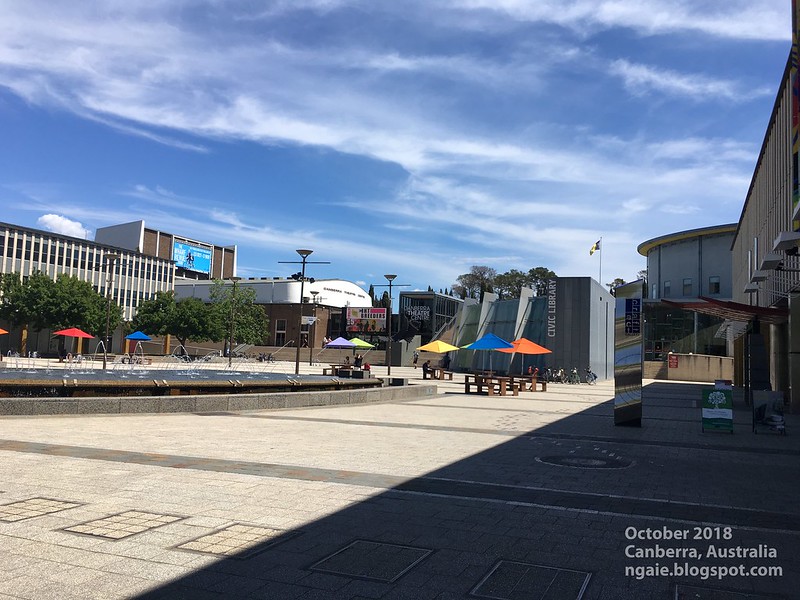
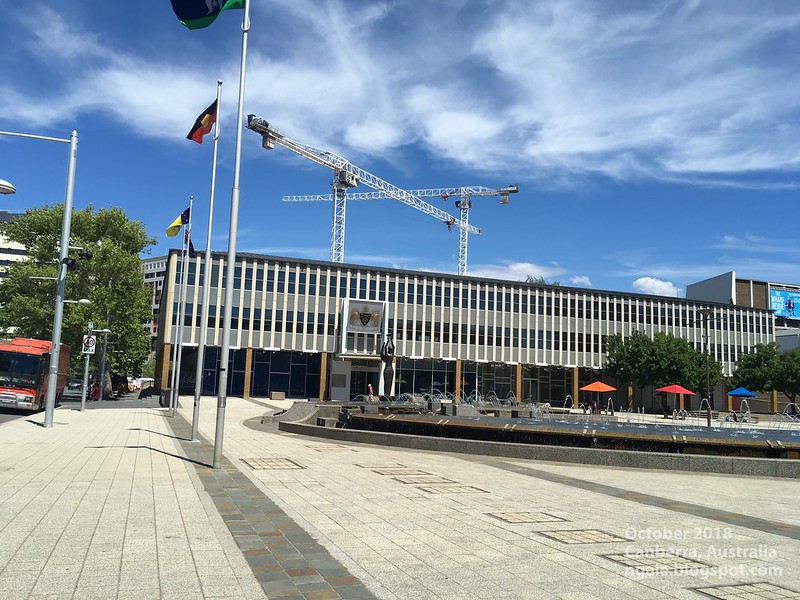
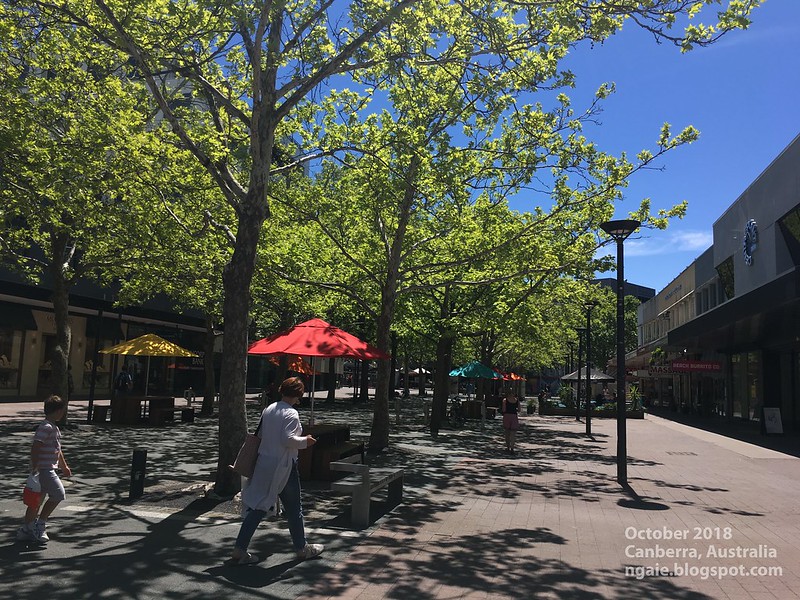
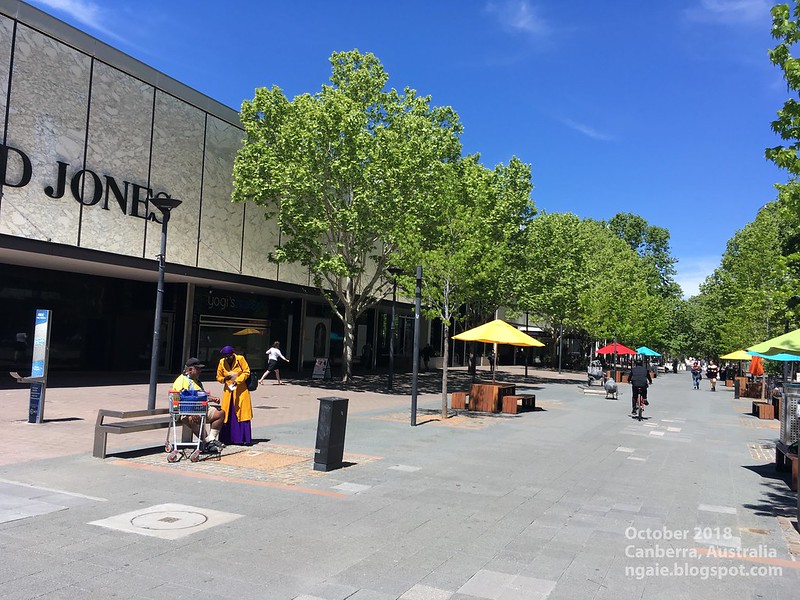
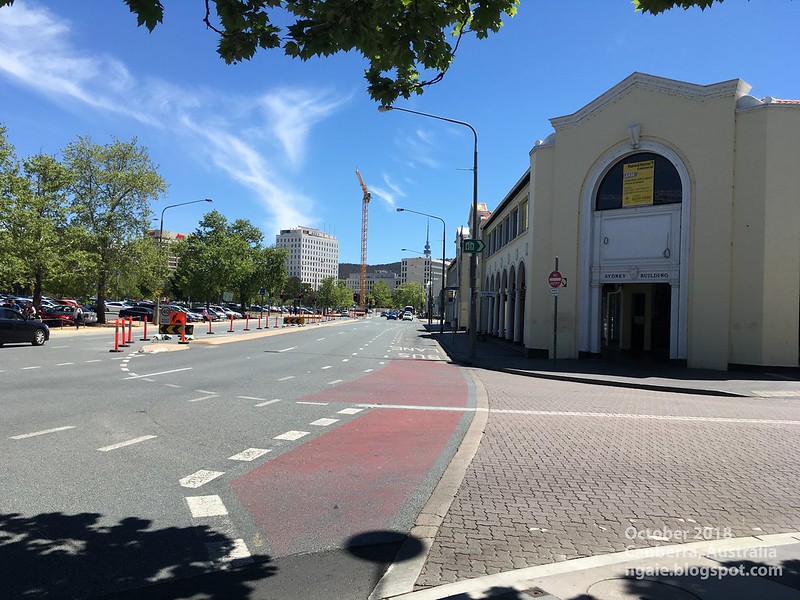
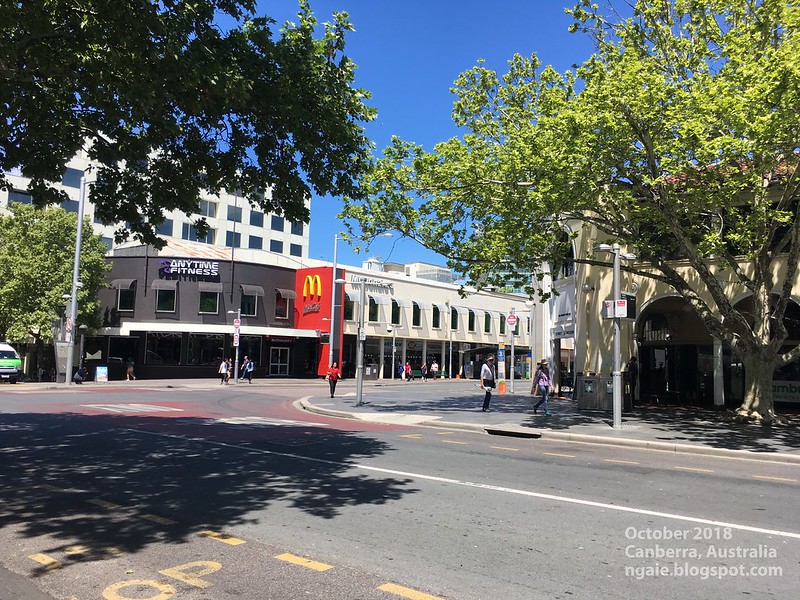
The main bus terminal.
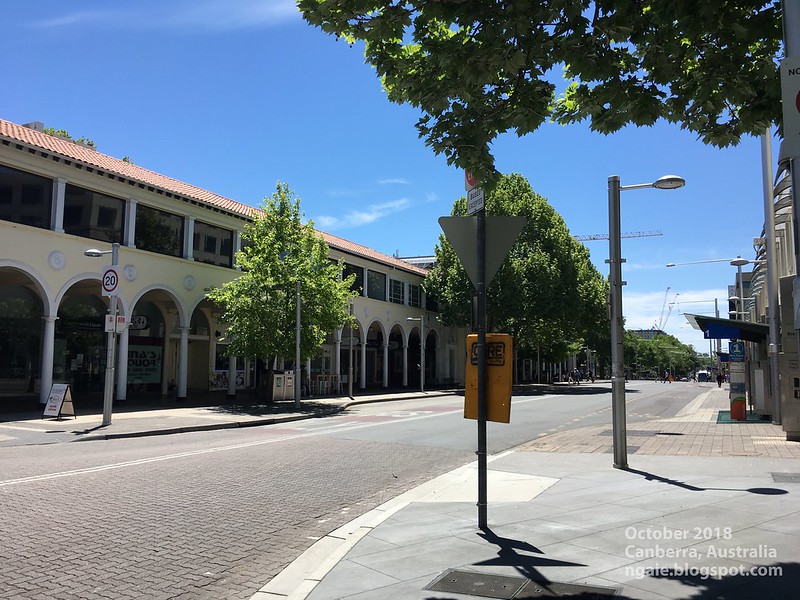
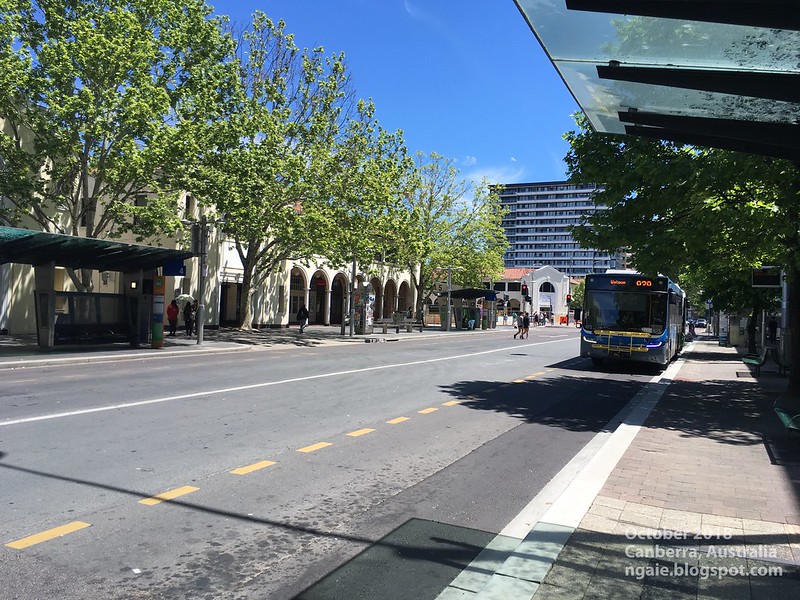
Even in the central area, you see parking lots everywhere.

Parkways and wide roads mean it is difficult to walk to places.
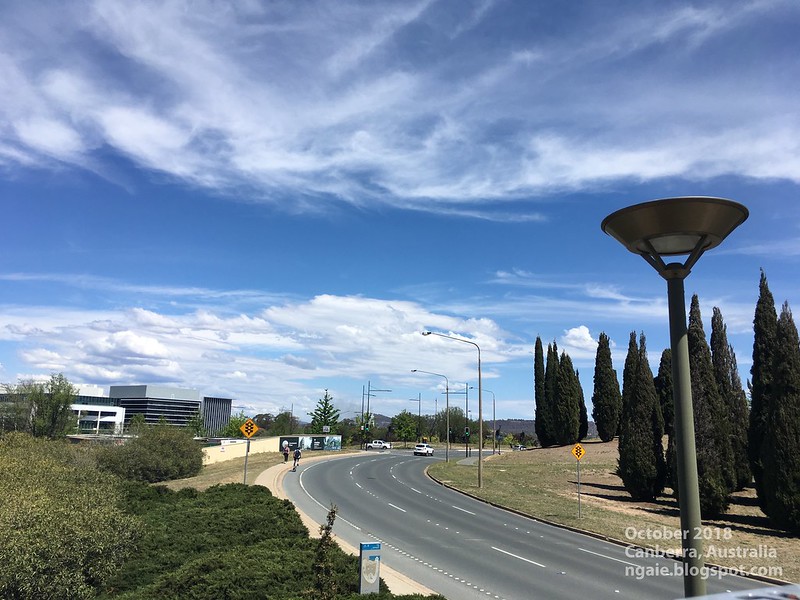
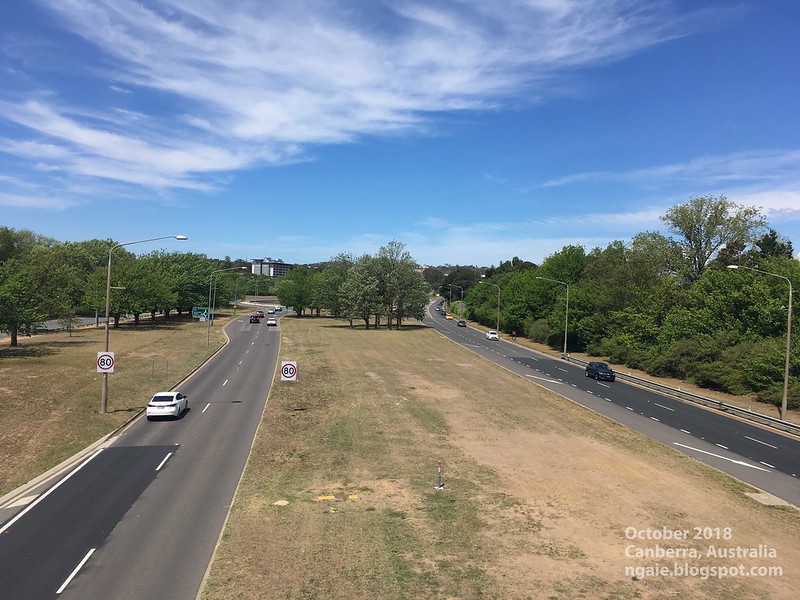
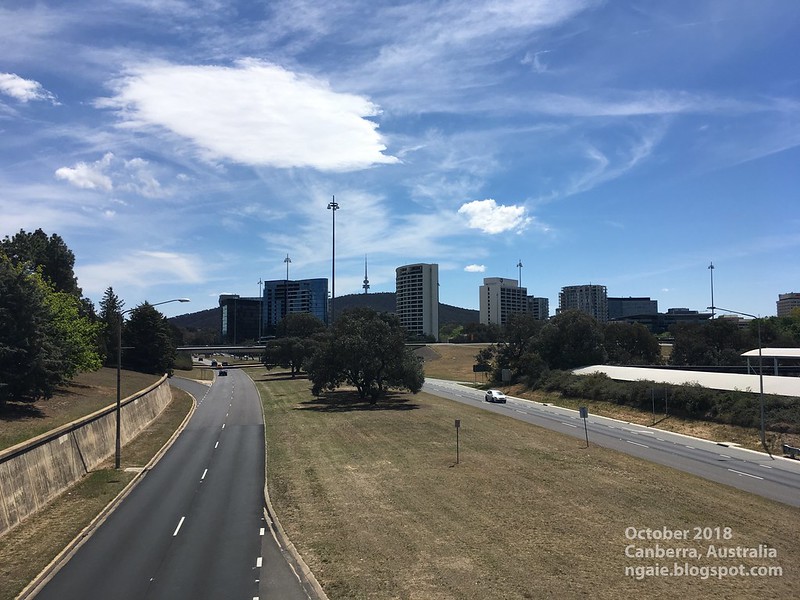

What city would be complete without a Chinatown? There is one in Canberra too. Located in the Dickson Town Centre and is a concentration of Asian shops in a strip mall.

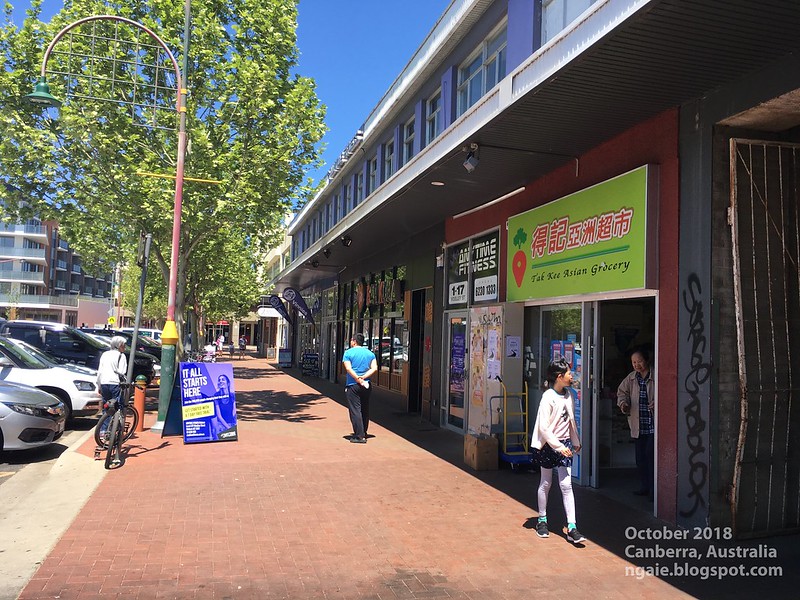
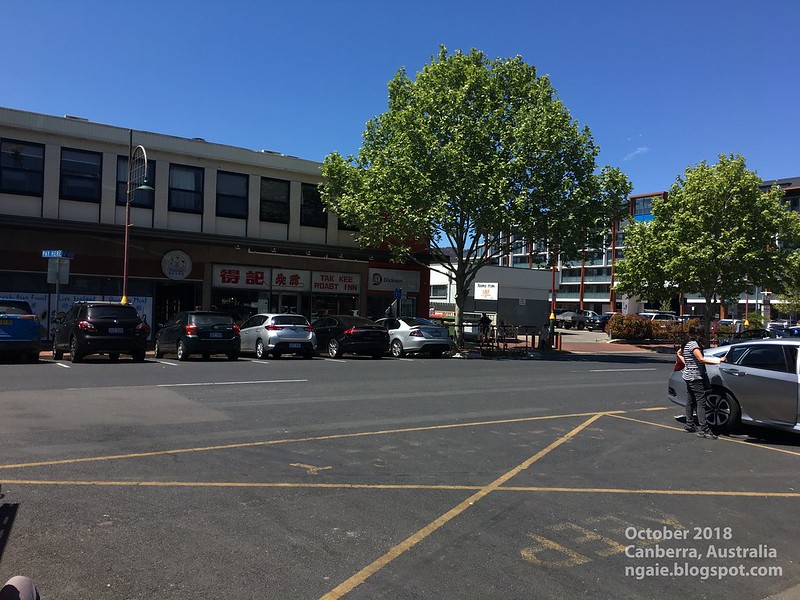
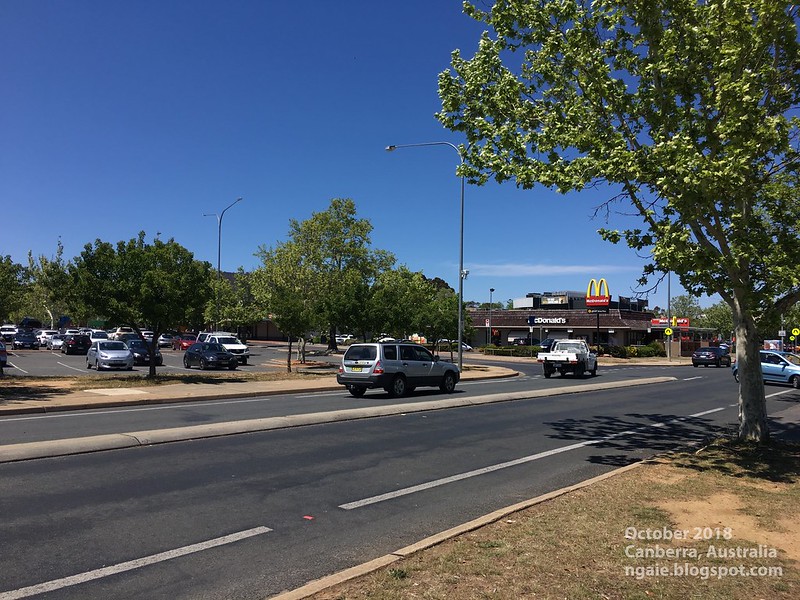
Light rail under construction. When this opens it will make moving around much easier for non-residents.
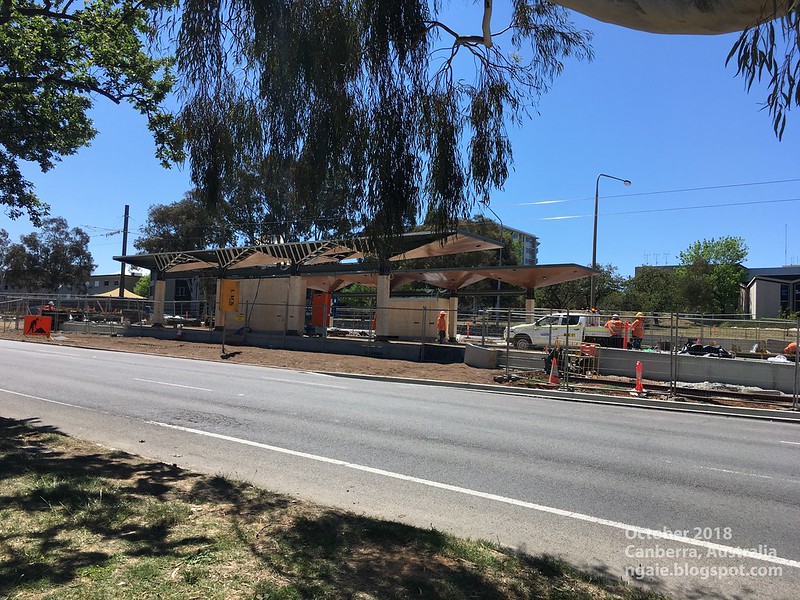
My hotel, 15 minutes walk from the central business district and 15 minutes walk to the Dickson Chinatown.
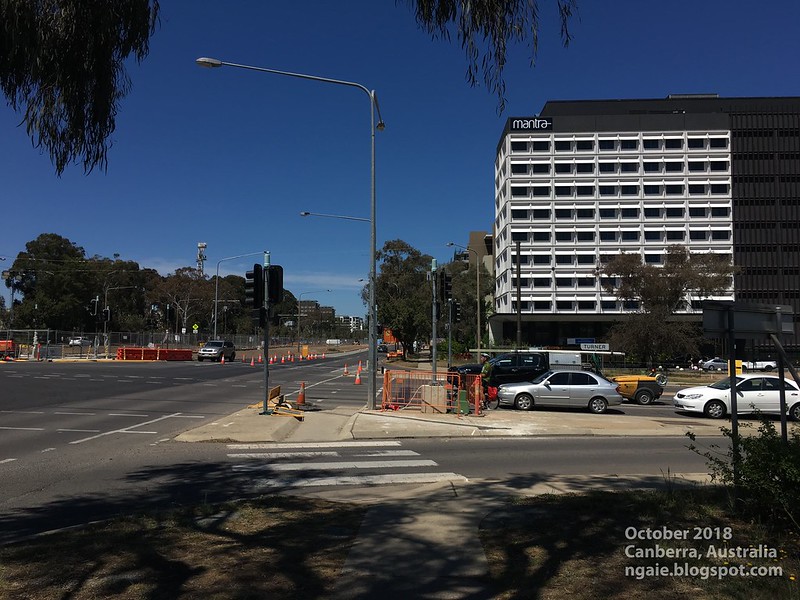
Interesting looking UFO building at the Australian National University.
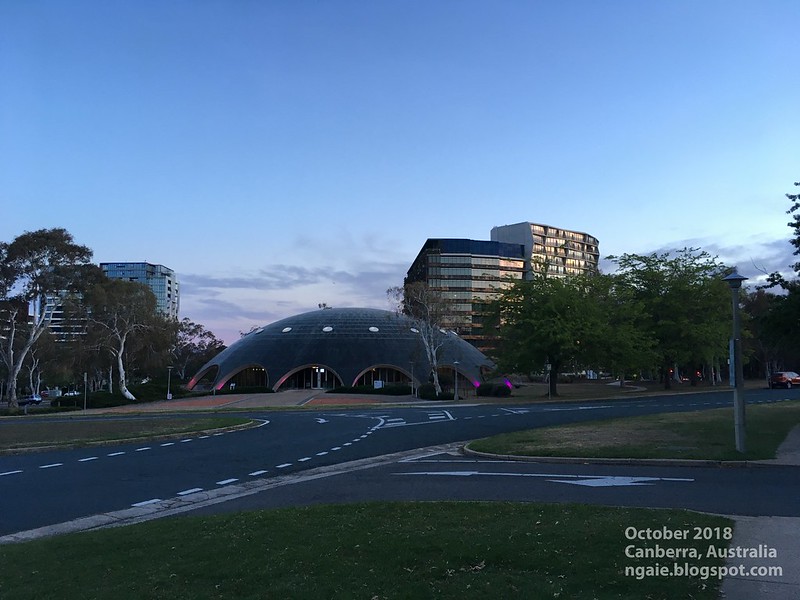

Canberra bus stops looked like something out of a Studio Ghibli movie.
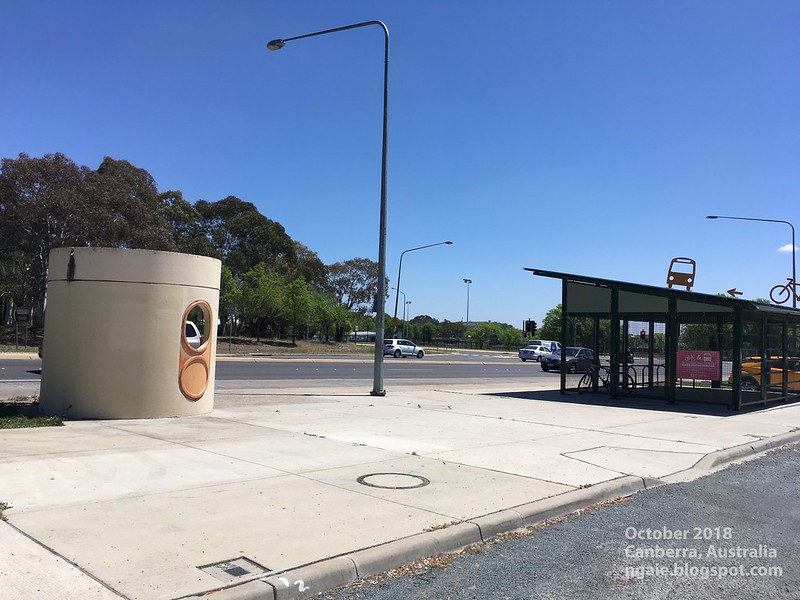
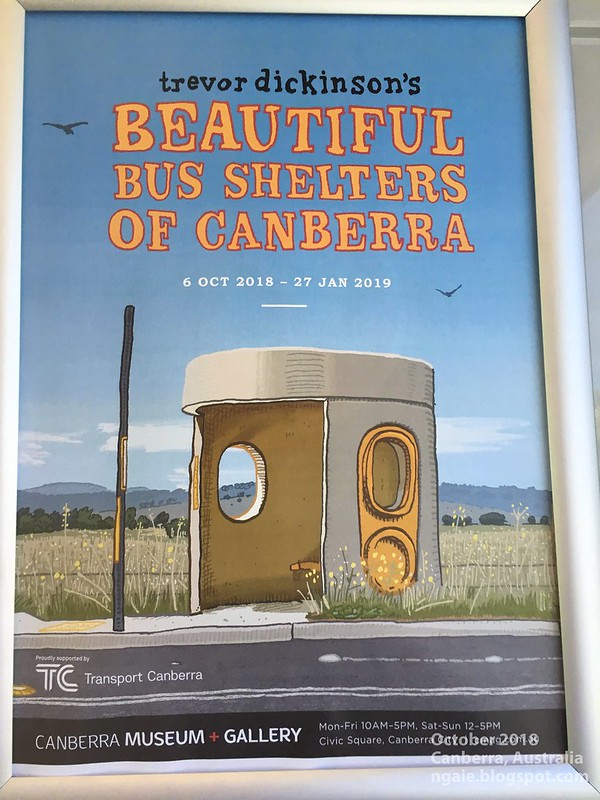
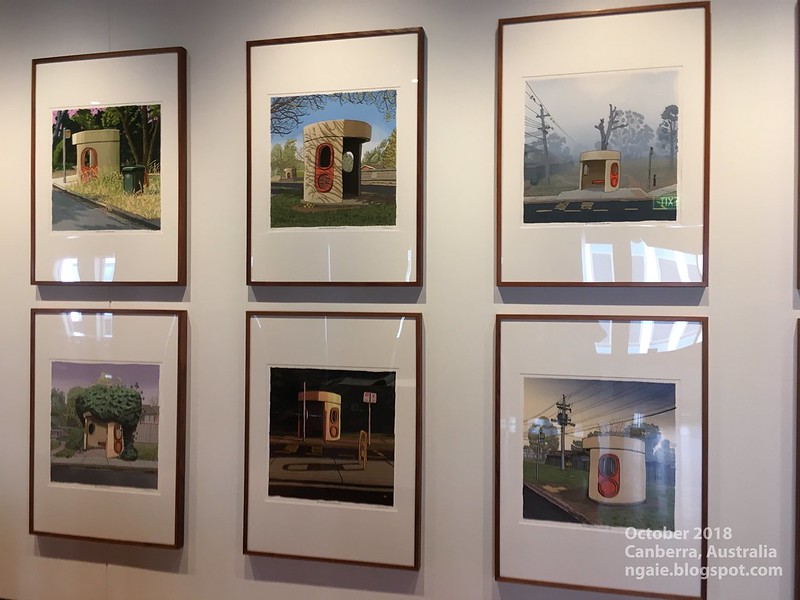
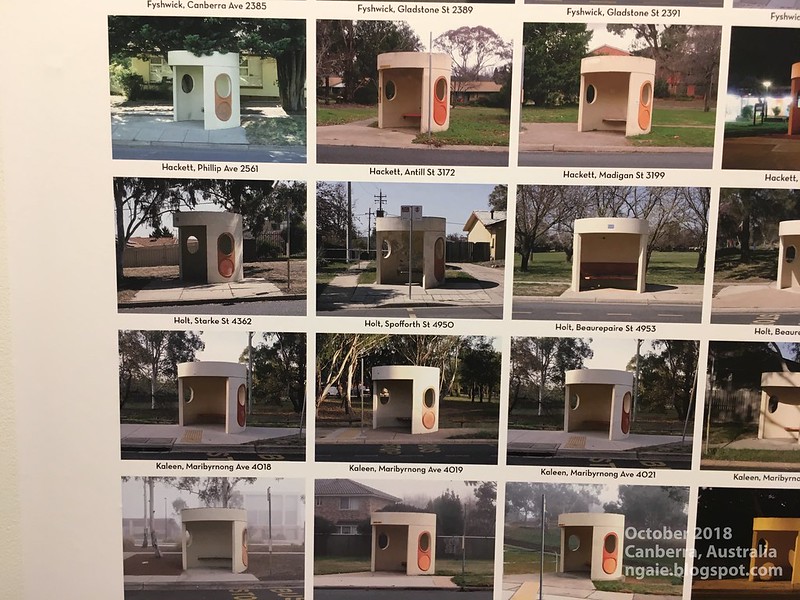
And finally, Canberra Airport, only a 15 minute drive from the central business district and I think the most modern in Australia.
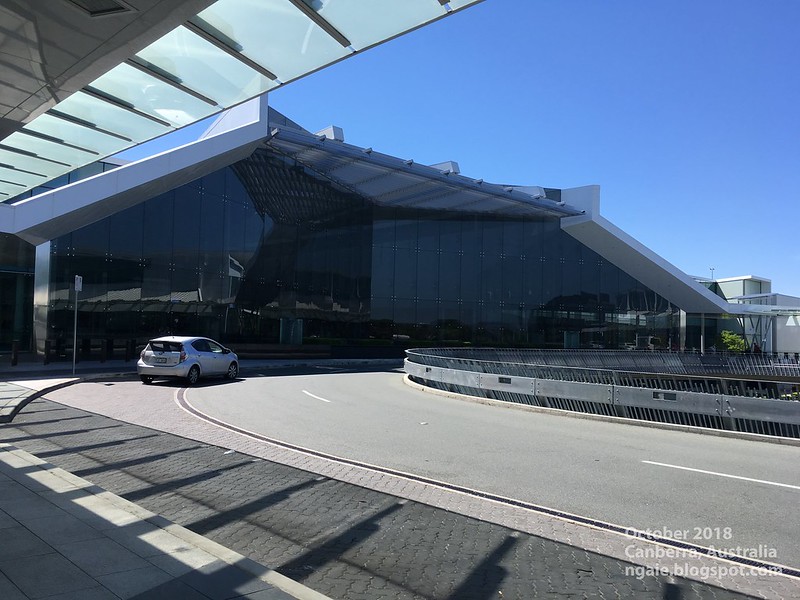
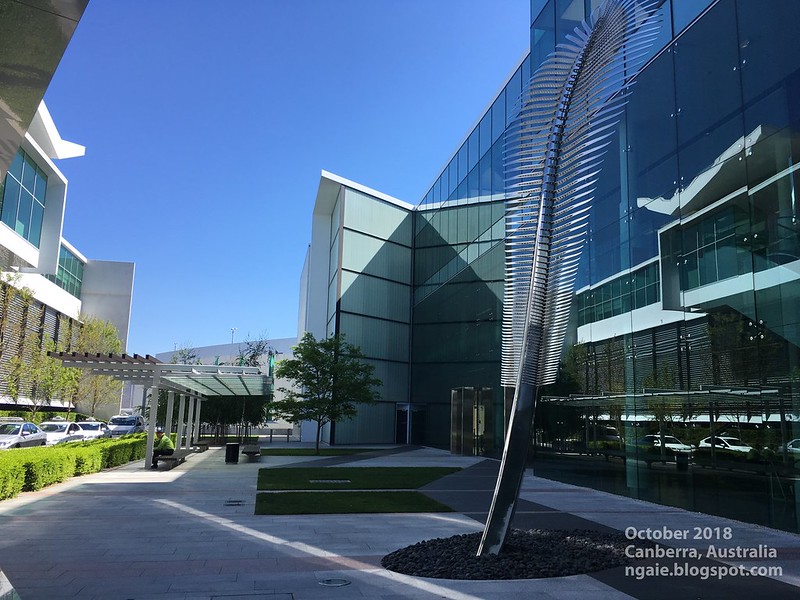
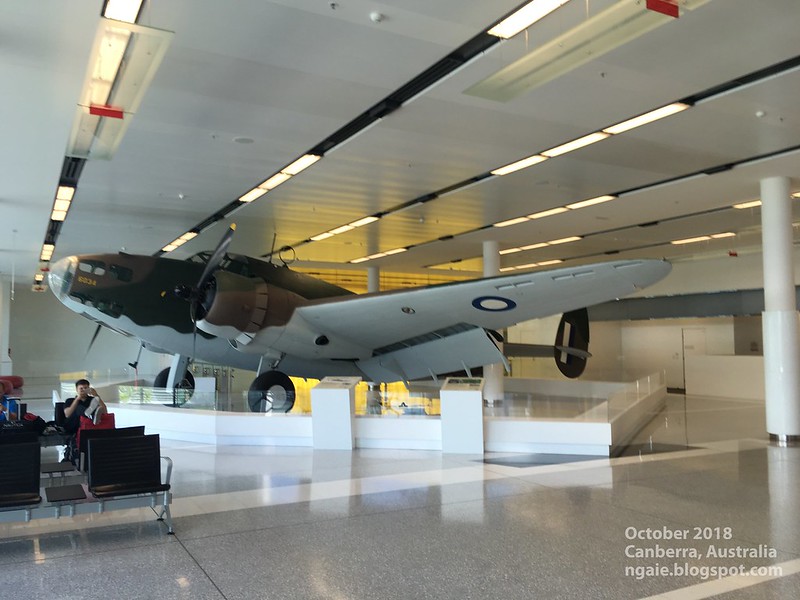
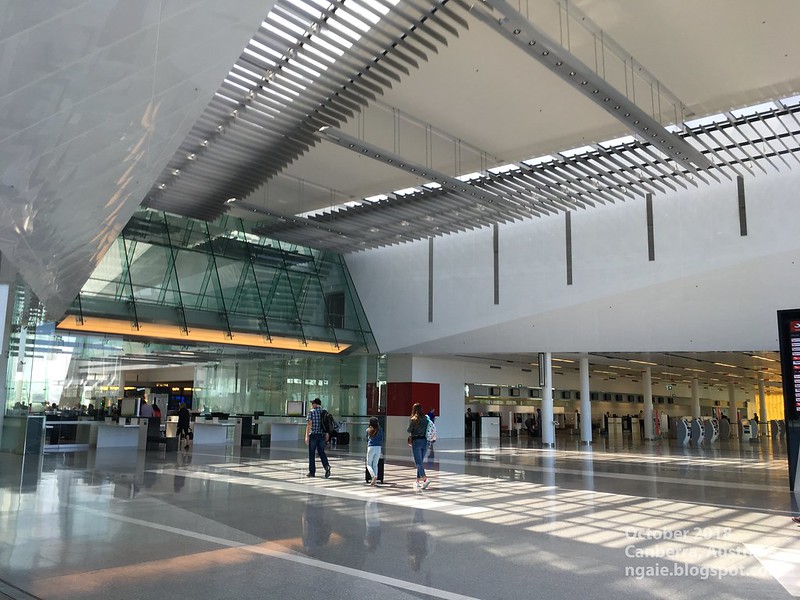

0 comments:
Post a Comment